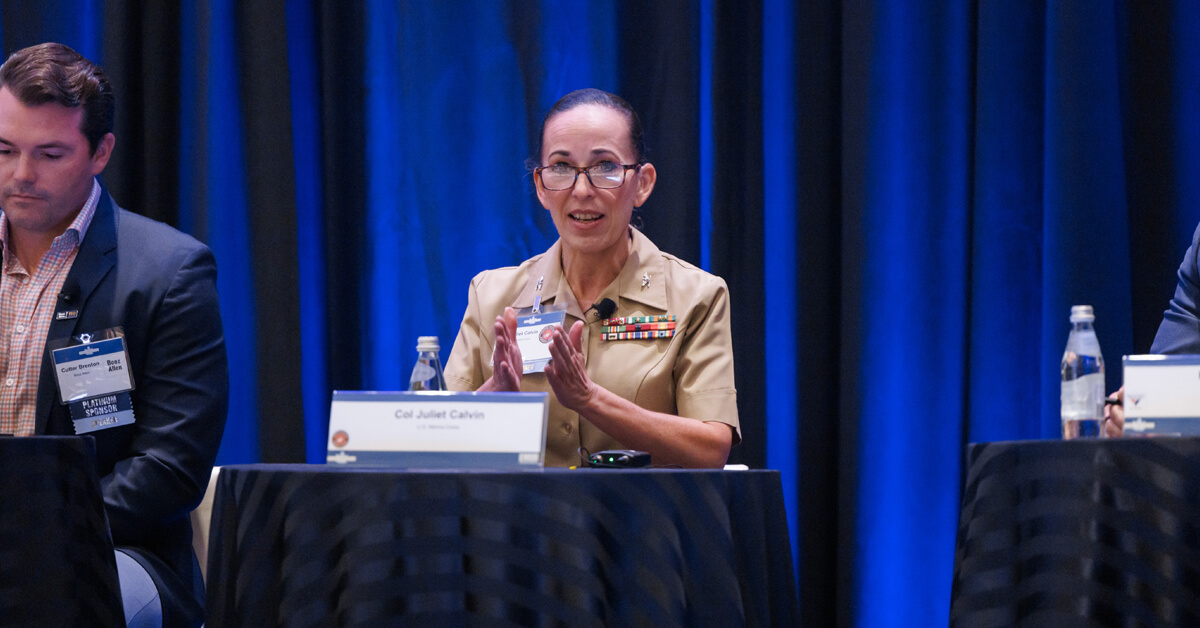Artificial intelligence has piqued the interest of the U.S. military services, and the Department of the Navy has sharpened its focus on AI technologies in recent years. These tools offer the department increased efficiency and elevated decision making capabilities, but disconnected, dated systems have presented a number of challenges.
One of these issues is the lack of a unified data ecosystem, something that is necessary for AI systems to function effectively.
During a panel discussion at the Potomac Officers Club’s 2024 Navy Summit last week, Robert Keisler, director of data science and AI (5.6) for the Naval Information Warfare Center Atlantic, said getting to a point where the Navy can streamline its many systems is not only a technology challenge, but an issue with dated policies that can prevent data sharing.
“You have investments in current architecture. You have investments in current storage locations or current avenues where you are storing that, that data fabric and creating that data fabric. And that’s for the ‘now,'” noted Col. Juliet Calvin, chief of staff of Joint Staff J-6, chief statistics, analytics and AI for the U.S. Marine Corps.
“To get to the next [stage of technology], which potentially involves sharing [data] across an existing line that has existed in a silo or a stovepipe, that involves policy,” she said.
One way the Navy has approached this challenge is by leveraging mission engineering, a method of technology development that Keisler explained takes into account “how we break down missions, how we understand the scenarios and how we get to mission threads.”
“Beyond the mission threads, you start to break those down, understand how systems interact, how data flows, what decisions are getting made and how everything’s supposed to play together,” he continued.
Once this information is collected, it can be used to inform policy.
Cutter Brenton, vice president of algorithmic warfare at Booz Allen Hamilton, pointed out that mission engineering also helps industry partners support Navy programs.

These principles, he said, are a big part of initiatives like Combined Joint All-Domain Command and Control, in which information sharing between a variety of systems and partners is crucial. Designing systems for this program — which aims to establish seamless communication between the U.S. military, allies and partners — requires the consideration of what data is being protected, who it is being protected from and why these security measures are needed.
“That’s where I think we need to get to more open architectures and data standards on the objects and metadata that we can share across industry, across the IC and across the DOD, so everyone can look at the same picture,” Brenton said.
CAPT Jesse Black, commanding officer of the Naval Research Laboratory, added that with open architectures, it is critical to understand the intent of the data, which “really defines what it needs to look like and what the security package is with it.”
From a decision making standpoint, different elements may require data to be used in a different way, and a system “needs to be adaptive to change in that environment when the demand signal changes,” he said.

Don’t miss out on the Potomac Officers Club’s next event, the 2024 Intel Summit on Sept. 19! This engagement will bring together Intelligence Community leaders and industry experts for a deep dive into the current intelligence landscape. To learn more and register to attend the event, click here.




